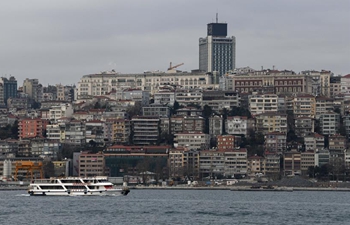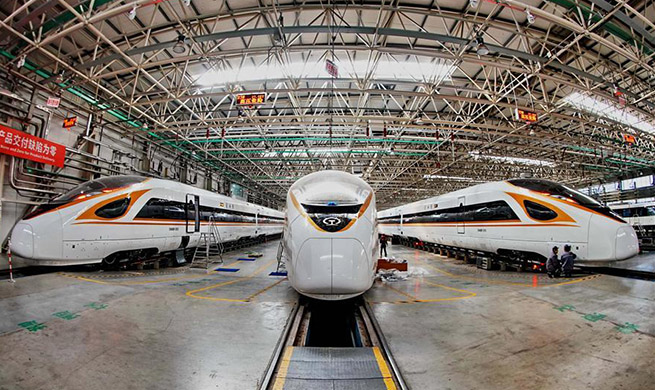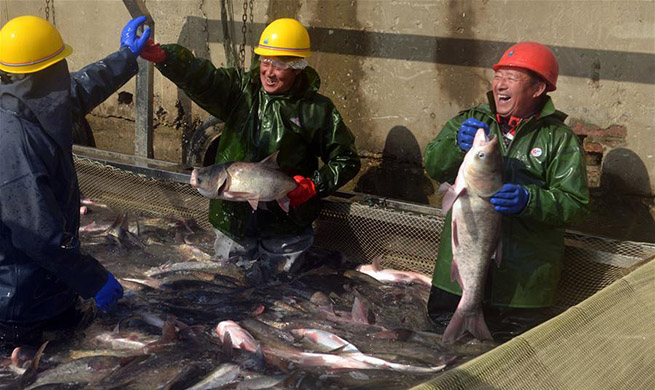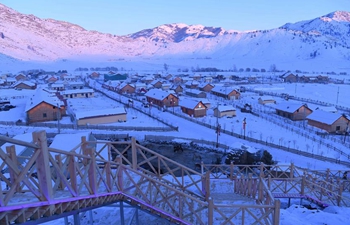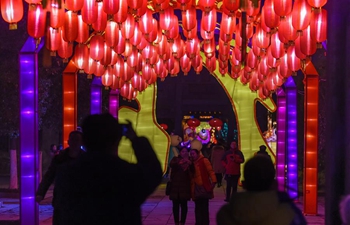ISTANBUL, Jan. 22 (Xinhua) -- One of the world's oldest subway lines in Turkey's most populous city Istanbul, which is still in service, is marking its 144th anniversary this month.
In 1875, the metro line with two wooden cars, powered by a steam engine, went into operation. The carriages were illuminated by oil lamps as there was no electricity at the time.
The first car was reserved for commuters only, while the second carried their animals, carts or other belongings.
The line, known as "Tunel" in Turkish, is the second oldest in the world after the one built in 1863 in London.
"But today it is considered as the world's oldest one which is still operational," said Cevdet Gungor, head of the customer services and corporate communications with the Istanbul Electricity, Tramway and Tunnel General Management (IETT).
Gungor told Xinhua that the construction of Tunel was significant for the residents as the city mainly relied on horsecars on the ground and small boats in the sea. "Otherwise, they had to walk across the entire city located over seven hills," he added.
Since then, Tunel has been running as a bridge between business and social life of this metropolis, connecting its two major centers.
One of the stops of Tunel is located on the seashore in the Karakoy neighborhood, an area packed with commercial centers, banks and shops. The other one is up on a hill, some 60 meters above the sea level in the bustling Istiklal Avenue, which is filled with shops, coffee houses, restaurants and galleries.
The street was then known as "La Grand Rue de Pera" in French, as it was popular with foreigners and non-Muslim citizens of the Ottoman era.
The creator of Tunel was also a French engineer, Eugene Henri Gavand.
According to IETT sources, Gavand came to Istanbul as a tourist in 1867. When he saw people have difficulties in climbing up the only narrow street on the hill between Karakoy and Pera, Gavand decided to build a funicular railway system for the city.
The Sultan of the Ottoman Empire, Abdulaziz, agreed to Gavand's project following a long and detailed research.
The steam engine of the train was replaced with an electric motor in 1971, while its wooden cars were changed into metal ones.
Now, Tunel has two reciprocating cars, each carrying 170 passengers at a time.
According to Murathan Bayri, a frequent passenger on the subway, people of Istanbul were very skeptical of an underground line when Tunel first went into service.
"But later they got used to it, as it immensely improved their lives," he told Xinhua.
Five months after its inauguration, the number of commuters tripled to 225,000 per day, according to a report on funicular systems released in 2014.
Today, Tunel helps make the journey easier in particular for those who living in the Asian part of the city, enabling them to access Istanbul's primary entertainment center without getting stuck in traffic.
"I take a ferry from the Asian shore to Karakoy and then directly jump on a car on Tunel. It is amazing," said Bayri.
The line covers a distance of 573 meters in 90 seconds, carrying an average of 15,000 commuters per day, or 5.5 million passengers per year, according to IETT figures.
"During rush hour, it is full of people trying to reach their offices or homes in time," Gungor said. "But during weekends, it is one of the primary attractions in the city for tourists."








